Papers and books by Piotr Zmyślony

International Journal of Tourism Cities, 2019
Purpose
The purpose of this paper is twofold: first, to analyze the phenomenon of urban tourism h... more Purpose
The purpose of this paper is twofold: first, to analyze the phenomenon of urban tourism hypertrophy (UTH) in the context of the process of tourism-related social conflicts formation; and second, to discuss the extent to which destination management organizations (DMOs) are prepared to take responsibilities and actions undertaken in this process.
Design/methodology/approach
The paper adopts conflict management (CM) theory as a framework for discussing UTH within the city context. The paper then analyzes the empirical example of social conflict in Kraków (Poland) to assess the predispositions of key institutions engaged in destination governance to lead CM process triggered by UTH. The Circle of Conflict approach proposed by C. Moore (The Mediation Process: Practical Strategies for Resolving Conflict, Jossey Bass, San Francisco, CA, 2014) is utilized as the main application method.
Findings
The study shows that DMO is the most appropriate entity to deal with UTH as a conflict manager; however, it has insufficient resources to fulfill all requirements relating to that role. Therefore, the range of responsibilities and roles of the contemporary DMOs should be completed with CM as the permanent task during UTH crisis.
Research limitations/implications
The example study was based on interviews carried out with a limited number of informants. Also, the contextual nature of the research as well as specific destination governance structure in Kraków blurred the picture of DMOs predispositions to leading the CM process.
Practical implications
The study supports urban DMO managers by suggesting a tool of diagnosis and intervention in UTH-induced conflicts. Thus, it makes fulfilling the mediator role a destination governance task.
Social implications
CM brings agreement among parties as to the understanding of the nature of conflict, which forms the basis for quick and mutually agreed actions, according to sustainable development principles.
Originality/value
The paper proposes an alternative approach to mitigate UTH-related problems in cities by adopting the CM framework which emphasizes the universal nature of conflict causes and proposes adequate tools for undertaking actions by DMOs.
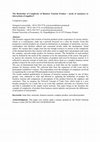
The literature suggests that creation of tourism products needs cooperation of various entities, ... more The literature suggests that creation of tourism products needs cooperation of various entities, which, as a consequence, make up a network focussed on a value for tourists. From this perspective tourism products are created in destinations as amalgams of attractions, services, commodities and facilities offered and consumed locally under the destinations’ brand names. We assume that a single actor has not enough resources to answer to the complexity of the demand therefore they interact with other actors to supply their sub-products and create the complex, network-origin product for business tourists. The borderline of such product may be defined by the needs of the customer or by the interactions of the actors. Our goal is to analyze the elements, levels and borders of products delivered for business tourists. It is reflected in network concept of trade fairs, which shows them as a complex business turism product created by the actors involved both directly and indirectly in trade fairs.
The case of international trade fairs was chosen, as trade fairs are the example of complex product for business turism. We collected data from the organizers of that event and its participants (exhibitors+visitors). The respondents were the managers of companies involved in organizing the event and 300 participants treated as business tourists.
The results enabled qualification of elements of business tourism product to one of three groups: core, enhanced or wide and allowed to capturing the borderline of product for business tourism and comparison of perceptions of the product between the suppliers and customers. Thus we propose the Network Concept of Trade Fairs which leads to a new broader perspective on a trade fair as an event that combines networks on a business level and that is embedded in the supply tourist network. This paper brings to the literature the example of complexity of product from business tourist industry and presents the differences of perception of such product.

The paper has twin but related objectives. It examines the origins of the concept of theme villag... more The paper has twin but related objectives. It examines the origins of the concept of theme villages in creating new rural tourism experiences and explores issues in the implementation of the concept. It also discusses the role of community involvement in theme village development, probing and testing existing models of local participation in tourism development in the context of five thematic villages in Poland. The five-year research project based on participatory action research covered the entire process of forming thematic rural tourist products. Five years later its effectiveness and sustainability was measured by a follow-up study. As a result, a seven-step community-created sustainable rural tourism development model is proposed. Local involvement in creating thematic villages is much more intensive and has such a wide scope that one cannot speak of facilitating or involving a community in the development process, but rather of tourism development creation by local communities. However, the social focus and inward-oriented perspective of community tourism can hamper effective adaptation of local resources to suit market needs and thus prevent the sustainable growth of community linked rural tourism. Expert external assistance may be necessary at key stages, especially by providing professional knowledge of markets and marketing.
Keywords: community involvement, thematic villages, sustainable rural tourism, community-based tourism planning, community-created sustainable rural tourism development, participatory action research.
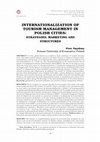
In cities global drivers are coupled to local conditions of tourism development. Urban tourism in... more In cities global drivers are coupled to local conditions of tourism development. Urban tourism industry, treated as an urban function, is subject to intensive internationalization, and because of its heterogeneity and complementarity it may influence the internationalization of a whole city. Internationalization of the tourist function has an impact on management activities per-formed by urban DMOs. The aim of the paper is to indicate the scope and extent of internationalization of destination management in Poland’s ten biggest cites. On the basis of an exhaustive questionnaire survey conducted in 2013 three spheres of adaptations have been identified: strategy, marketing, changes to DMOs’ organizational structures and collabo-ration. In addition, three modes of tourism internationalization have been distinguished: active (Gdańsk and Lublin), reactive (Bydgoszcz, Szczecin and Wrocław), active-reactive (Katowice and Poznań) and secondary (Kraków, Łódź and Warsaw). However, multi-level and multi-organizational system of destination governance in Poland does not allow taking full ad-vantage of internationalization of the tourist function.

Purpose
– The paper aims to propose a method of identifying and evaluating leadership potential ... more Purpose
– The paper aims to propose a method of identifying and evaluating leadership potential of stakeholders in emerging tourist destinations and to verify this method in three Polish destinations. Developing destinations miss well-established networking structures and management experiences. The greatest impact on their success is made by the most active stakeholders who are able to pool and mobilise partners and coordinate their efforts to realise common goals.
Design/methodology/approach
– The research is based on a stakeholders’ potential analysis and the network approach. To identify destination leadership, the method – adapted from an axiological analysis of regional development participants – is used and verified in rural, coastal and mountain destinations in Poland. An in-depth analysis of stakeholders representing the public, private and non-profit sectors is conducted to assess their leadership potential. Ultimately, 183 interviews were conducted.
Findings
– Based on literature review, five dimensions of destination leadership were identified, namely, networking capability, analytical abilities, impact capability, economic potential and legitimacy. In emerging destinations, the most influential stakeholders are characterised by strong impact, analytical leadership capabilities and legitimacy.
Research limitations/implications
– The paper provides insights into destination leadership discussion and research. The limited number of verification cases and limited qualitative data analysis could be seen as its limitation.
Practical implications
– Emerging destinations have incomplete leadership. An imbalanced structure of destination leadership may have serious consequences on stability and development of destinations; it also affects the process of identification of potential leaders.
Originality/value
– The paper is original because it proposes an innovative method of identifying destination leadership, especially in emerging destinations.
Keywords
Leadership, Research methods, Poland, Destination leadership, Cooperation, Network approach
Kwartalnik Naukowy Uczelni Vistula, 2017
Summary: For many years exhibition industry has developed dynamically noting fluctuations and rea... more Summary: For many years exhibition industry has developed dynamically noting fluctuations and reacts to external influences. The aim of the paper is to examine quantitative and qualitative changes in Polish exhibition industry in the context of global changes. The analysis of the available data confirms that the industry has grown and changed within the past 10 years. The strong oligopolistic dominance of Poznań, Kielce, Cracow, Warsaw, and Lublin centres was identified. The market has been driven by the demand of visitors with strong support of the stable number of exhibitors. The relative decline of B2B exhibitions' market share and simultaneous increasing popularity of B2C and mixed events, especially those dedicated to leisure, hobby and entertainment, were also identified.
Wzrost znaczenia turystyki miejskiej jako siły zmieniającej miasta staje się źródłem konfliktów, ... more Wzrost znaczenia turystyki miejskiej jako siły zmieniającej miasta staje się źródłem konfliktów, szczególnie w miastach cennych pod względem kulturowym. Emanacją tych zmian są obserwowane w ostatnich latach w wielu miastach przybierające różne formy protesty mieszkańców przeciw niekontrolowanemu rozwojowi turystyki masowej. Celem artykułu jest wyjaśnienie głównych przyczyn oraz identyfikacja sposobów (w rozumieniu strategii i taktyk) oraz form protestów miejskich skierowanych przeciw rozwojowi turystyki. Badania oparto o metodę studium przypadku protestów antyturystycznych odbywających się w dwóch miasta europejskich: Wenecji i Barcelonie. Badania przeprowadzono na źródłach wtórnych, zastosowano metodę opisową oraz fotograficzną. Sformułowane na tej podstawie wnioski dotyczą zmiany znaczenia turystyki jako współczesnej funkcji miejskiej oraz jako czynnika aktywizacji społecznej.
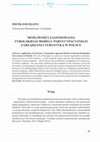
Miejsce turystyki wiejskiej we współczesnej gospodarce, W. Krzymińska, M. Wilk-Grzywna (red.), „Studia KPZK PAN”, 2016
Governance in Poland. The aim of the paper is to present a tourism organisation and management sy... more Governance in Poland. The aim of the paper is to present a tourism organisation and management system in Tyrol (Austria) -a rural mountain region and also the strongest province in Austria's tourism industry -and to discuss the possibilities of adaptation its experiences in Polish conditions. The case study method has been adopted. In the literature section the coexistence of participatory management model and corporate management model has been discussed. The distinguishing features of the Tyrolean system are: mandatory membership of tourism enterprises, stable financial basis based on multiple sources, a clear division of powers and responsibilities between regional tourist agency Tirol Werbung and local tourism organisations performing as associations. Based on research seven general lessons of destination management have been formulated.

Abstrakt Cel. Próba określenia istoty i składowych syntetycznego wskaźnika potencjału oddziaływan... more Abstrakt Cel. Próba określenia istoty i składowych syntetycznego wskaźnika potencjału oddziaływania wybranych wydarzeń targowych na zjawisko transferu wiedzy. Metoda. Synteza przeglądu literatury oraz doświadczeń autorskich wynikających z udzia-łu w dwóch projektach badawczych dotyczących współpracy i dyfuzji wiedzy w branży spot-kań w formie modelu wielowymiarowego wskaźnika jako miary rzeczywistego i potencjalnego transferu wiedzy w ramach oraz w wyniku wydarzenia targowego. Wyniki. Wyodrębniono 32 mierniki tworzące syntetyczny wskaźnik oddziaływania wydarze-nia targowego na transfer wiedzy, pogrupowane w trzech płaszczyznach: perspektywa organi-zacyjna/partycypacyjna sieci; poziom badanej sieci; poziom produktu targowego. Ograniczenia badań i wnioskowania. (1) Rozważania mają charakter progresywny (tzw. work-in-progress). (2) Charakter potencjalny modelu – propozycja niezweryfikowana w prak-tycznym pomiarze. (3) Charakter komparatywny modelu – użyteczny do porównań wydarzeń targowych. (4) Wskaźnik ograniczony jest do jednego typu wydarzenia biznesowego – imprezy targowej. Implikacje praktyczne. Proponowany wskaźnik może być użyteczny do podjęcia decy-zji w kwestii zaangażowania organizacyjnego lub partycypacji przedsiębiorstw w wydarzeniu targowym, a także przez władze lokalne w zakresie określenia wpływu danego wydarzenia w transfer wiedzy do gospodarki lokalnej. Oryginalność. Propozycja modelu wskaźnika potencjału imprez targowych w odniesieniu do ich potencjału w zakresie transferu wiedzy stanowi pierwszą próbę prezentowaną w literatu-rze. Dotychczas prezentowane były koncepcje pomiaru wpływu gospodarczego wydarzeń tar-gowych. Rodzaj pracy. Artykuł prezentujący koncepcje teoretyczne. Słowa kluczowe: branża spotkań, przemysł targowy, transfer wiedzy, sieci biznesowe, tury-styka biznesowa.

Cel pracy: (1) pomiar potencjału gospodarczego oraz turystycznego najsilniejszych metropolii na ś... more Cel pracy: (1) pomiar potencjału gospodarczego oraz turystycznego najsilniejszych metropolii na świecie uznawanych jako miasta światowe lub miasta globalne; (2) określenie natężenia relacji między potencjałem turystycznym a potencjałem gospodarczym tych miast; (3) zaproponowanie klasyfikacji metropolii turystycznych świata.
Metoda badań: Wielokryterialna metoda rangowania przeprowadzona na podstawie źródeł wtórnych w formie rankingów miast charakteryzujących ich potencjał turystyczny oraz gospodarczy. Pomiar związku między potencjałem turystycznym a gospodarczym z wykorzystaniem współczynnika korelacji Pearsona.
Wyniki badań: Uzyskano ranking 22 metropolii turystycznych świata, na czele którego uplasowały się Londyn, Paryż i Nowy Jork. Potwierdzono silny związek między potencjałem turystycznym a potencjałem gospodarczym badanych miast.
Ograniczenia badań i wnioskowania: Ograniczona jakość materiału źródłowego, ograniczony obiektywizm metody selekcji materiału źródłowego oraz metody rangowania; uogólniony charakter wyników.
Implikacje praktyczne: Aplikatywna weryfikacja opisowej koncepcji miast światowej turystyki zaproponowanej przez Maitlanda i Newmana [2009], zaproponowanie metody pomiaru stopnia internacjonalizacji turystycznej miast.
Słowa kluczowe: turystyka w mieście, rankingi miast, miasta światowe, miasta globalne, metropolie turystyczne.
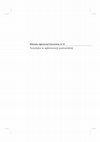
Biblioteka Aglomeracji Poznańskiej Nr 20, Centrum Badań Metropolitalnych UAM,, 2012
Celem opracowania jest kompleksowa analiza stanu oraz perspektyw rozwoju turystyki w aglomeracji ... more Celem opracowania jest kompleksowa analiza stanu oraz perspektyw rozwoju turystyki w aglomeracji poznańskiej. W pracy po zaprezentowaniu teoretycznych podstaw problemu, dokonano rozpoznania i oceny walorów oraz zagospodarowania turystycznego Poznania i jego strefy podmiejskiej. Na tym tle przeprowadzono analizę ruchu turystycznego oraz wskazano pozycję aglomeracji poznańskiej na rynku turystycznym. Dało to podstawy do opracowania programu metropolitalnej oferty turystycznej na tym obszarze. Głównym jego zamierzeniem stała się koordynacja różnych działań i inicjatyw turystycznych podejmowanych w ramach aglomeracji. Do podstawowych działań służących realizacji programu zaliczono: zapewnienie komplementarności dób i usług turystycznych, tworzenie zintegrowanych produktów turystycznych (np: turystyki biznesowej, kulturowej, kwalifikowanej), budowę systemu informacji i promocji turystycznej oraz wspieranie współpracy instytucji i podmiotów odpowiedzialnych za rozwój turystyki.
Skład zespołu badawczego
Autorzy:
Michał Beim, Sylwia Bródka, Dorota Matuszewska, Ilona Potocka
(Uniwersytet im. Adama Mickiewicza w Poznaniu);
Jan Mazurczak
(Poznańska Lokalna Organizacja Turystyczna);
Piotr Szmatuła,
Piotr Zmyślony
(Uniwersytet Ekonomiczny w Poznaniu)
Redakcja naukowa:
Sylwia Bródka, Piotr Zmyślony
Bródka S., Zmyślony P., red. (2012). Turystyka w aglomeracji poznańskiej, Biblioteka Aglomeracji Poznańskiej Nr 20, Centrum Badań Metropolitalnych UAM, Bogucki Wydawnictwo Naukowe, Poznań, 268 stron
Zarządzanie i organizacja przemysłu spotkań w Polsce: teoria i praktyka, 2014
artykule przedstawiono studium przypadku sieci biznesowej, która powstała w celu zorganizowania ... more artykule przedstawiono studium przypadku sieci biznesowej, która powstała w celu zorganizowania konferencji międzynarodowej ABSL w 2014 roku w Poznaniu. Celem artykułu jest określenie uczestników sieci, którzy tworzą podstawowy, wzbogacony i poszerzony produkt na rynku turystki biznesowej. Założono, że podstawą do identyfikacji takiej sieci będzie wymiana wiedzy między podmiotami zaangażowanymi w organizację konferencji. W związku z tym w artykule omówiono rolę wymiany wiedzy w kształtowaniu sieci biznesowych, uwarunkowania sieci w przemyśle spotkań, metodykę badań prowadzonych w celu identyfikacji sieci związanej z konferencją ABSL 2014 oraz efekt badań, jakim jest wykaz podmiotów tworzących tę sieć.
The paper refers to consumer involvement in unusual promotional activities, which are simultaneou... more The paper refers to consumer involvement in unusual promotional activities, which are simultaneous 50% price cuts of basic tourism services in the city. The aim of the paper is to estimate how long promotional pricing in the form of a marketing event organized once a year can produce positive consumer response and therefore can be considered as an effective marketing tool. A survey among consumers and organisations involved in the event has been carried out since the very first edition and has been repeated using the same methodology. The findings show that consumers reactions to promotional pricing and thus the effectiveness of this marketing tool decreases after the third event edition. Moreover, despite the growing number of the services sold up to the third edition the share of visitors in consumer structure fluctuates with a decreasing tendency

To the Reader
It is my great pleasure to hand over another, decidedly different, special issue o... more To the Reader
It is my great pleasure to hand over another, decidedly different, special issue of “Folia Turistica.” This two-volume issue (published separately in Polish and in English) has been prepared for the 35th anniversary of the Tourism and Recreation Faculty at the learning institution which has published our journal since its inception – The University School of Physical Education in Krakow. The creation of this faculty also began our university’s process of educating students with majors in Tourism and Recreation, which, we should stress, mobilized Poland’s second MA degree program in this field, an endeavor which has successfully continued to this day. We have decided to ring in this anniversary with a publishing project that is unique even by international standards – the preparation of a special edition of our basic journal. To this end, we invited eight outstanding foreign tourism researchers to take part, all of whom decided to publish some of their most recent research herein. Apart from these undisputed academic authorities, who enjoy the recognition of tourism scholars around the world, we have also invited (through the normal article reviewing procedure) eight top Polish researchers to contribute to our project, those who are taking up issues in line with our foreign guests’, or who have a particularly extensive scholarly output in a given field.
Thus came about this special issue of “Folia Turistica,” which will carry the subtitle “The Master Classes.” I am utterly convinced that each of the authors of the works found in the first section of this issue fully deserves to be called a “master” in world tourism research. I also hope that soon we shall be able to say the same for all the Polish authors published herein (to my mind some of them already deserve this name). Apart from the translations of the masters’ articles, they have also provided presentations of their work (found in the second part of the volume), which, to my mind, only go to confirm their brilliant technique and their scholarly maturity.
As the editor and initiator of the notion of publishing this anniversary issue of “Folia Turistica” (we should add that, apart from the above-mentioned anniversary, it is also the jubilee 25th issue of our journal), I would like to stress that this idea sprang from a few different aims. Apart from celebrating the anniversary itself, one of the main aims was to familiarize Polish readers and researchers with the most recent work by the world’s finest tourism scholars. The majority (five) of the eight works written by the invited authors were specially prepared for our journal. Three articles are reprints (in the English version of the volume) and translations (in the Polish version) of works previously published in renowned journals. The first of these is the opening chapter in the recent two-volume book devoted in its entirety to a certain theory familiar to all tourism researchers, developed by one of our masters (who himself edited both volumes of this book), while the other two articles earlier appeared in top-rated academic periodicals (“Society” and “Annals of Tourism Research”).
In sum, the volume contains nineteen articles, grouped in three separate parts. The first contains the articles prepared by the masters, their brief academic biograms, and an outline of their contribution to the development of tourism research. The translation of the masters’ articles and biograms have been rendered by Polish academics, who have also written their own separate articles, thematically corresponding with the works of “their” masters. These make up the second part of the volume. In the final part, which is linked to the central idea of this exceptional issue of “Folia Turistica” in a special way, there is a text dealing with the roles and undertakings of the titular “masters” in modern science, using the example of tourism research. The inspiration to write this text came from the remarkable achievements and careers of all the authors invited to participate in this publishing project. It would seem that this work could serve as a springboard for an interesting discussion on the subject, which should – to my mind – take place among people engaged in the study. There is also a special attachment to the article, containing statements by forefront Polish and foreign tourism researchers, who have been invited by the authors of article to give their opinion on a few key issues, such as: changes taking place in contemporary scholarship, and the shifts these cause in the perception of the roles and undertakings of the “masters,” their efforts to improve the quality of tourism research and publications, improvement of methodology, exploring new directions in research, progress in academic personnel (especially young tourism researchers), integration (international inclusive) of the whole community of tourism scholars, academic ethics, and so forth.
I hope that the reader will enjoy this somewhat unconventional undertaking. We ought to add that it is the first issue of our journal to appear in English as well. Two factors led us to take such a step. The first is the fact that an English-language publication of “Folia Turistica,” combined with the publication of so many outstanding foreign names, should mark out a “Polish presence” in the international arena of tourism research (something which Polish researchers seldom manage to achieve, regrettably), and promote our journal abroad. The second factor concerns the further development of “Folia Turistica.” This issue may indeed be the first step toward turning it into an English-language or bilingual publication. We are very interested to hear what readers think of the idea, and in particular, potential authors of future academic works to be published in forthcoming issues of “Folia Turistica.”
There is one more aspect and important aim of this project I would like to underline: it gave a large group of (mostly younger) Polish researchers direct contact with real masters of world research on tourism, with figures they had heretofore known only through the literature. For all of us (writing on behalf of the Polish project participants) this was surely a very valuable experience, which will undoubtedly “pay off” in the future in an even more improved quality of our research and publications.
It remains to wish you a pleasant read and a great deal of academic inspiration, which is surely provided by this special anniversary of our journal. I invite one and all to participate and to publish in the pages of our journal.
Wieslaw Alejziak
CONTENTS
To the Reader
PART I
- From the work of Eminent International Scholars
in Tourism Studies
1. Erik Cohen: The Changing Faces of Contemporary Tourism
1.1. A Brief Outline of the Academic Achievements of Erik Cohen and His Contribution to the Development of Tourism Research (text edition by K. Podemski)
2. Graham Dann: “Take Me to the Hilton”: The Language of Tourism Paradigm
2.1. A Brief Outline of the Academic Achievements of Graham M.S. Dann and His Contribution ... (text edition by S. Owsianowska)
3. Richard W. Butler: The Origins of the Tourism Area Life Cycle
3.1. A Brief Outline of the Academic Achievements of Richard W. Butler and His Contribution ... (text edition by Z. Kruczek and A. Szromek
4. Douglas G. Pearce: A Needs-Functions Model of Tourism Distribution
4.1. A Brief Outline of the Academic Achievements of Douglas G. Pearce and His Contribution ... (text edition by B. Włodarczyk)
5. Metin Kozak, Marica Mazurek: Destination Branding: Brand Equity, Brand Extension and Co-branding
5.1. A Brief Outline of the Academic Achievements of Metin Kozak and His Contribution ... (text edition by M. Żemła)
6. H. Leo Theuns: A Structural Revıew of the Extent of Actual and Potentıal Leakages/ Lınkages ın Carıbbean Tourısm
6.1. A Brief Outline of the Academic Achievements of H. Leo Theuns and His Contribution ... (text edition by P. Zmyślony)
7. Arch G. Woodside, Marcia Y. Sakai: Case Study Research on Evaluations of Destination Management Organizations’ Actions and Outcomes
7.1. A Brief Outline of the Academic Achievements of Arch G. Woodside and His Contribution ... (text edition by W. Alejziak)
8. Philip L. Pearce: Respecting the Past, Preparing for the Future; the Rise of Australian Academic Tourism Research
8.1. A Brief Outline of the Academic Achievements of Philip.L. Pearce and His Contribution ... (text edition by S. D. Ujma)
PART II
- From the work of Polish Tourism Researchers
9. Krzysztof Podemski: The Polish Tourist Abroad. From Stalinism to Schengen and Wizz Air
10. Sabina Owsianowska: Tourism Promotion, Discourse and Identity
11. Zygmunt Kruczek, Adam Szromek: Using the Butler Cycle for Interpreting Tourist Attractions, Based on the Example of the Salt Mine in Wieliczka
12. Bogdan Włodarczyk: The Tourists Landscape and Tourist Space of the City
13. Michał Żemła: Value Co-creation and Competitiveness of Tourism Destinations
14. Piotr Zmyślony: Globalization, Tourism and Cities: Pros and cons
15. Wiesław Alejziak: A Global Tourism Policy - Utopia, Alternative or Necessity?
16. Dorota Ujma, Lesley Lawrence: Optimising Feedback Trought the Tourism PDP (Personal Development, Planning) Curriculum
PART III
Epilogue - The Role of “Masters” (Eminent Scholars)
in Contemporary Science – The Case of Tourism Studies
17. Sabina Owsianowska: Prospects for the Critical Study of Tourism and the Role of Mentors in Academia
18. Wieslaw Alejziak: Who is an Academic Mentor, and What is His/Her Role in Contemporary Study? Some Touughts on Tourism Research
The aim of the paper is to develop an index that would enable public and private entities to iden... more The aim of the paper is to develop an index that would enable public and private entities to identify the general locations for tourism investments within destinations nearing to an end of their involvement stage or entering the development stage of their life cycle. The central part of the process, which is structured on a multidimensional comparative analysis, is the construction and computation of the composite index describing the investor appeal of an emerging tourist destination.
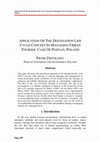
The paper discusses the operational potential of the destination life cycle (DLC) concept with re... more The paper discusses the operational potential of the destination life cycle (DLC) concept with reference to tourism planning and management in urban destinations under conditions of risk resulted from the shortage of extensive and reliable information and data on a destination's appearance. The DLC of the city of Poznan (Poland) is examined. The aim of the investigation is to identify symptoms of decline, in the framework of the life-cycle concepts proposed by Butler (1980); van der Borg (1991) and Russo (2002). The analysis of secondary data sources and a questionnaire survey among local tourism experts were conducted to assess the threat of Poznan's tourism decline. Results show that Poznan's tourism is currently in the development stage, nonetheless the risk of a decline is moderate. The main and most detrimental symptoms of a possible crisis are the result of an insufficiently developed tourist offer and problems relating to managing tourism on a municipal level.
Current Issues of Tourism Research, 2011
The Journal of Economics and Social Research
The article deals with the city image. It focuses on the problems connected with the evaluation o... more The article deals with the city image. It focuses on the problems connected with the evaluation of different attributes of the city is image perceived by the tourists. A stuay was conducted among members of organized tour groups guided in Poznan (Poland). The research allowed the identification of the most relevant attributes of the city image based on which the segmentation of respondents was made.
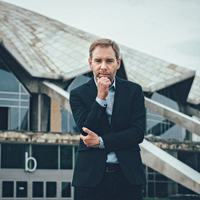

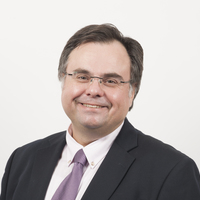

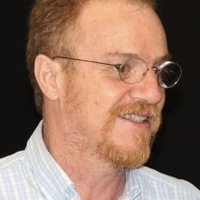


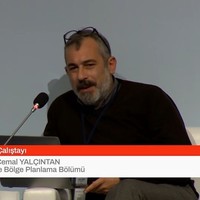
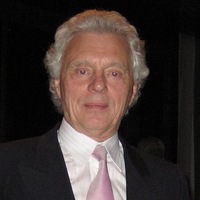

Uploads
Papers and books by Piotr Zmyślony
The purpose of this paper is twofold: first, to analyze the phenomenon of urban tourism hypertrophy (UTH) in the context of the process of tourism-related social conflicts formation; and second, to discuss the extent to which destination management organizations (DMOs) are prepared to take responsibilities and actions undertaken in this process.
Design/methodology/approach
The paper adopts conflict management (CM) theory as a framework for discussing UTH within the city context. The paper then analyzes the empirical example of social conflict in Kraków (Poland) to assess the predispositions of key institutions engaged in destination governance to lead CM process triggered by UTH. The Circle of Conflict approach proposed by C. Moore (The Mediation Process: Practical Strategies for Resolving Conflict, Jossey Bass, San Francisco, CA, 2014) is utilized as the main application method.
Findings
The study shows that DMO is the most appropriate entity to deal with UTH as a conflict manager; however, it has insufficient resources to fulfill all requirements relating to that role. Therefore, the range of responsibilities and roles of the contemporary DMOs should be completed with CM as the permanent task during UTH crisis.
Research limitations/implications
The example study was based on interviews carried out with a limited number of informants. Also, the contextual nature of the research as well as specific destination governance structure in Kraków blurred the picture of DMOs predispositions to leading the CM process.
Practical implications
The study supports urban DMO managers by suggesting a tool of diagnosis and intervention in UTH-induced conflicts. Thus, it makes fulfilling the mediator role a destination governance task.
Social implications
CM brings agreement among parties as to the understanding of the nature of conflict, which forms the basis for quick and mutually agreed actions, according to sustainable development principles.
Originality/value
The paper proposes an alternative approach to mitigate UTH-related problems in cities by adopting the CM framework which emphasizes the universal nature of conflict causes and proposes adequate tools for undertaking actions by DMOs.
The case of international trade fairs was chosen, as trade fairs are the example of complex product for business turism. We collected data from the organizers of that event and its participants (exhibitors+visitors). The respondents were the managers of companies involved in organizing the event and 300 participants treated as business tourists.
The results enabled qualification of elements of business tourism product to one of three groups: core, enhanced or wide and allowed to capturing the borderline of product for business tourism and comparison of perceptions of the product between the suppliers and customers. Thus we propose the Network Concept of Trade Fairs which leads to a new broader perspective on a trade fair as an event that combines networks on a business level and that is embedded in the supply tourist network. This paper brings to the literature the example of complexity of product from business tourist industry and presents the differences of perception of such product.
Keywords: community involvement, thematic villages, sustainable rural tourism, community-based tourism planning, community-created sustainable rural tourism development, participatory action research.
– The paper aims to propose a method of identifying and evaluating leadership potential of stakeholders in emerging tourist destinations and to verify this method in three Polish destinations. Developing destinations miss well-established networking structures and management experiences. The greatest impact on their success is made by the most active stakeholders who are able to pool and mobilise partners and coordinate their efforts to realise common goals.
Design/methodology/approach
– The research is based on a stakeholders’ potential analysis and the network approach. To identify destination leadership, the method – adapted from an axiological analysis of regional development participants – is used and verified in rural, coastal and mountain destinations in Poland. An in-depth analysis of stakeholders representing the public, private and non-profit sectors is conducted to assess their leadership potential. Ultimately, 183 interviews were conducted.
Findings
– Based on literature review, five dimensions of destination leadership were identified, namely, networking capability, analytical abilities, impact capability, economic potential and legitimacy. In emerging destinations, the most influential stakeholders are characterised by strong impact, analytical leadership capabilities and legitimacy.
Research limitations/implications
– The paper provides insights into destination leadership discussion and research. The limited number of verification cases and limited qualitative data analysis could be seen as its limitation.
Practical implications
– Emerging destinations have incomplete leadership. An imbalanced structure of destination leadership may have serious consequences on stability and development of destinations; it also affects the process of identification of potential leaders.
Originality/value
– The paper is original because it proposes an innovative method of identifying destination leadership, especially in emerging destinations.
Keywords
Leadership, Research methods, Poland, Destination leadership, Cooperation, Network approach
Metoda badań: Wielokryterialna metoda rangowania przeprowadzona na podstawie źródeł wtórnych w formie rankingów miast charakteryzujących ich potencjał turystyczny oraz gospodarczy. Pomiar związku między potencjałem turystycznym a gospodarczym z wykorzystaniem współczynnika korelacji Pearsona.
Wyniki badań: Uzyskano ranking 22 metropolii turystycznych świata, na czele którego uplasowały się Londyn, Paryż i Nowy Jork. Potwierdzono silny związek między potencjałem turystycznym a potencjałem gospodarczym badanych miast.
Ograniczenia badań i wnioskowania: Ograniczona jakość materiału źródłowego, ograniczony obiektywizm metody selekcji materiału źródłowego oraz metody rangowania; uogólniony charakter wyników.
Implikacje praktyczne: Aplikatywna weryfikacja opisowej koncepcji miast światowej turystyki zaproponowanej przez Maitlanda i Newmana [2009], zaproponowanie metody pomiaru stopnia internacjonalizacji turystycznej miast.
Słowa kluczowe: turystyka w mieście, rankingi miast, miasta światowe, miasta globalne, metropolie turystyczne.
Skład zespołu badawczego
Autorzy:
Michał Beim, Sylwia Bródka, Dorota Matuszewska, Ilona Potocka
(Uniwersytet im. Adama Mickiewicza w Poznaniu);
Jan Mazurczak
(Poznańska Lokalna Organizacja Turystyczna);
Piotr Szmatuła,
Piotr Zmyślony
(Uniwersytet Ekonomiczny w Poznaniu)
Redakcja naukowa:
Sylwia Bródka, Piotr Zmyślony
Bródka S., Zmyślony P., red. (2012). Turystyka w aglomeracji poznańskiej, Biblioteka Aglomeracji Poznańskiej Nr 20, Centrum Badań Metropolitalnych UAM, Bogucki Wydawnictwo Naukowe, Poznań, 268 stron
It is my great pleasure to hand over another, decidedly different, special issue of “Folia Turistica.” This two-volume issue (published separately in Polish and in English) has been prepared for the 35th anniversary of the Tourism and Recreation Faculty at the learning institution which has published our journal since its inception – The University School of Physical Education in Krakow. The creation of this faculty also began our university’s process of educating students with majors in Tourism and Recreation, which, we should stress, mobilized Poland’s second MA degree program in this field, an endeavor which has successfully continued to this day. We have decided to ring in this anniversary with a publishing project that is unique even by international standards – the preparation of a special edition of our basic journal. To this end, we invited eight outstanding foreign tourism researchers to take part, all of whom decided to publish some of their most recent research herein. Apart from these undisputed academic authorities, who enjoy the recognition of tourism scholars around the world, we have also invited (through the normal article reviewing procedure) eight top Polish researchers to contribute to our project, those who are taking up issues in line with our foreign guests’, or who have a particularly extensive scholarly output in a given field.
Thus came about this special issue of “Folia Turistica,” which will carry the subtitle “The Master Classes.” I am utterly convinced that each of the authors of the works found in the first section of this issue fully deserves to be called a “master” in world tourism research. I also hope that soon we shall be able to say the same for all the Polish authors published herein (to my mind some of them already deserve this name). Apart from the translations of the masters’ articles, they have also provided presentations of their work (found in the second part of the volume), which, to my mind, only go to confirm their brilliant technique and their scholarly maturity.
As the editor and initiator of the notion of publishing this anniversary issue of “Folia Turistica” (we should add that, apart from the above-mentioned anniversary, it is also the jubilee 25th issue of our journal), I would like to stress that this idea sprang from a few different aims. Apart from celebrating the anniversary itself, one of the main aims was to familiarize Polish readers and researchers with the most recent work by the world’s finest tourism scholars. The majority (five) of the eight works written by the invited authors were specially prepared for our journal. Three articles are reprints (in the English version of the volume) and translations (in the Polish version) of works previously published in renowned journals. The first of these is the opening chapter in the recent two-volume book devoted in its entirety to a certain theory familiar to all tourism researchers, developed by one of our masters (who himself edited both volumes of this book), while the other two articles earlier appeared in top-rated academic periodicals (“Society” and “Annals of Tourism Research”).
In sum, the volume contains nineteen articles, grouped in three separate parts. The first contains the articles prepared by the masters, their brief academic biograms, and an outline of their contribution to the development of tourism research. The translation of the masters’ articles and biograms have been rendered by Polish academics, who have also written their own separate articles, thematically corresponding with the works of “their” masters. These make up the second part of the volume. In the final part, which is linked to the central idea of this exceptional issue of “Folia Turistica” in a special way, there is a text dealing with the roles and undertakings of the titular “masters” in modern science, using the example of tourism research. The inspiration to write this text came from the remarkable achievements and careers of all the authors invited to participate in this publishing project. It would seem that this work could serve as a springboard for an interesting discussion on the subject, which should – to my mind – take place among people engaged in the study. There is also a special attachment to the article, containing statements by forefront Polish and foreign tourism researchers, who have been invited by the authors of article to give their opinion on a few key issues, such as: changes taking place in contemporary scholarship, and the shifts these cause in the perception of the roles and undertakings of the “masters,” their efforts to improve the quality of tourism research and publications, improvement of methodology, exploring new directions in research, progress in academic personnel (especially young tourism researchers), integration (international inclusive) of the whole community of tourism scholars, academic ethics, and so forth.
I hope that the reader will enjoy this somewhat unconventional undertaking. We ought to add that it is the first issue of our journal to appear in English as well. Two factors led us to take such a step. The first is the fact that an English-language publication of “Folia Turistica,” combined with the publication of so many outstanding foreign names, should mark out a “Polish presence” in the international arena of tourism research (something which Polish researchers seldom manage to achieve, regrettably), and promote our journal abroad. The second factor concerns the further development of “Folia Turistica.” This issue may indeed be the first step toward turning it into an English-language or bilingual publication. We are very interested to hear what readers think of the idea, and in particular, potential authors of future academic works to be published in forthcoming issues of “Folia Turistica.”
There is one more aspect and important aim of this project I would like to underline: it gave a large group of (mostly younger) Polish researchers direct contact with real masters of world research on tourism, with figures they had heretofore known only through the literature. For all of us (writing on behalf of the Polish project participants) this was surely a very valuable experience, which will undoubtedly “pay off” in the future in an even more improved quality of our research and publications.
It remains to wish you a pleasant read and a great deal of academic inspiration, which is surely provided by this special anniversary of our journal. I invite one and all to participate and to publish in the pages of our journal.
Wieslaw Alejziak
CONTENTS
To the Reader
PART I
- From the work of Eminent International Scholars
in Tourism Studies
1. Erik Cohen: The Changing Faces of Contemporary Tourism
1.1. A Brief Outline of the Academic Achievements of Erik Cohen and His Contribution to the Development of Tourism Research (text edition by K. Podemski)
2. Graham Dann: “Take Me to the Hilton”: The Language of Tourism Paradigm
2.1. A Brief Outline of the Academic Achievements of Graham M.S. Dann and His Contribution ... (text edition by S. Owsianowska)
3. Richard W. Butler: The Origins of the Tourism Area Life Cycle
3.1. A Brief Outline of the Academic Achievements of Richard W. Butler and His Contribution ... (text edition by Z. Kruczek and A. Szromek
4. Douglas G. Pearce: A Needs-Functions Model of Tourism Distribution
4.1. A Brief Outline of the Academic Achievements of Douglas G. Pearce and His Contribution ... (text edition by B. Włodarczyk)
5. Metin Kozak, Marica Mazurek: Destination Branding: Brand Equity, Brand Extension and Co-branding
5.1. A Brief Outline of the Academic Achievements of Metin Kozak and His Contribution ... (text edition by M. Żemła)
6. H. Leo Theuns: A Structural Revıew of the Extent of Actual and Potentıal Leakages/ Lınkages ın Carıbbean Tourısm
6.1. A Brief Outline of the Academic Achievements of H. Leo Theuns and His Contribution ... (text edition by P. Zmyślony)
7. Arch G. Woodside, Marcia Y. Sakai: Case Study Research on Evaluations of Destination Management Organizations’ Actions and Outcomes
7.1. A Brief Outline of the Academic Achievements of Arch G. Woodside and His Contribution ... (text edition by W. Alejziak)
8. Philip L. Pearce: Respecting the Past, Preparing for the Future; the Rise of Australian Academic Tourism Research
8.1. A Brief Outline of the Academic Achievements of Philip.L. Pearce and His Contribution ... (text edition by S. D. Ujma)
PART II
- From the work of Polish Tourism Researchers
9. Krzysztof Podemski: The Polish Tourist Abroad. From Stalinism to Schengen and Wizz Air
10. Sabina Owsianowska: Tourism Promotion, Discourse and Identity
11. Zygmunt Kruczek, Adam Szromek: Using the Butler Cycle for Interpreting Tourist Attractions, Based on the Example of the Salt Mine in Wieliczka
12. Bogdan Włodarczyk: The Tourists Landscape and Tourist Space of the City
13. Michał Żemła: Value Co-creation and Competitiveness of Tourism Destinations
14. Piotr Zmyślony: Globalization, Tourism and Cities: Pros and cons
15. Wiesław Alejziak: A Global Tourism Policy - Utopia, Alternative or Necessity?
16. Dorota Ujma, Lesley Lawrence: Optimising Feedback Trought the Tourism PDP (Personal Development, Planning) Curriculum
PART III
Epilogue - The Role of “Masters” (Eminent Scholars)
in Contemporary Science – The Case of Tourism Studies
17. Sabina Owsianowska: Prospects for the Critical Study of Tourism and the Role of Mentors in Academia
18. Wieslaw Alejziak: Who is an Academic Mentor, and What is His/Her Role in Contemporary Study? Some Touughts on Tourism Research
The purpose of this paper is twofold: first, to analyze the phenomenon of urban tourism hypertrophy (UTH) in the context of the process of tourism-related social conflicts formation; and second, to discuss the extent to which destination management organizations (DMOs) are prepared to take responsibilities and actions undertaken in this process.
Design/methodology/approach
The paper adopts conflict management (CM) theory as a framework for discussing UTH within the city context. The paper then analyzes the empirical example of social conflict in Kraków (Poland) to assess the predispositions of key institutions engaged in destination governance to lead CM process triggered by UTH. The Circle of Conflict approach proposed by C. Moore (The Mediation Process: Practical Strategies for Resolving Conflict, Jossey Bass, San Francisco, CA, 2014) is utilized as the main application method.
Findings
The study shows that DMO is the most appropriate entity to deal with UTH as a conflict manager; however, it has insufficient resources to fulfill all requirements relating to that role. Therefore, the range of responsibilities and roles of the contemporary DMOs should be completed with CM as the permanent task during UTH crisis.
Research limitations/implications
The example study was based on interviews carried out with a limited number of informants. Also, the contextual nature of the research as well as specific destination governance structure in Kraków blurred the picture of DMOs predispositions to leading the CM process.
Practical implications
The study supports urban DMO managers by suggesting a tool of diagnosis and intervention in UTH-induced conflicts. Thus, it makes fulfilling the mediator role a destination governance task.
Social implications
CM brings agreement among parties as to the understanding of the nature of conflict, which forms the basis for quick and mutually agreed actions, according to sustainable development principles.
Originality/value
The paper proposes an alternative approach to mitigate UTH-related problems in cities by adopting the CM framework which emphasizes the universal nature of conflict causes and proposes adequate tools for undertaking actions by DMOs.
The case of international trade fairs was chosen, as trade fairs are the example of complex product for business turism. We collected data from the organizers of that event and its participants (exhibitors+visitors). The respondents were the managers of companies involved in organizing the event and 300 participants treated as business tourists.
The results enabled qualification of elements of business tourism product to one of three groups: core, enhanced or wide and allowed to capturing the borderline of product for business tourism and comparison of perceptions of the product between the suppliers and customers. Thus we propose the Network Concept of Trade Fairs which leads to a new broader perspective on a trade fair as an event that combines networks on a business level and that is embedded in the supply tourist network. This paper brings to the literature the example of complexity of product from business tourist industry and presents the differences of perception of such product.
Keywords: community involvement, thematic villages, sustainable rural tourism, community-based tourism planning, community-created sustainable rural tourism development, participatory action research.
– The paper aims to propose a method of identifying and evaluating leadership potential of stakeholders in emerging tourist destinations and to verify this method in three Polish destinations. Developing destinations miss well-established networking structures and management experiences. The greatest impact on their success is made by the most active stakeholders who are able to pool and mobilise partners and coordinate their efforts to realise common goals.
Design/methodology/approach
– The research is based on a stakeholders’ potential analysis and the network approach. To identify destination leadership, the method – adapted from an axiological analysis of regional development participants – is used and verified in rural, coastal and mountain destinations in Poland. An in-depth analysis of stakeholders representing the public, private and non-profit sectors is conducted to assess their leadership potential. Ultimately, 183 interviews were conducted.
Findings
– Based on literature review, five dimensions of destination leadership were identified, namely, networking capability, analytical abilities, impact capability, economic potential and legitimacy. In emerging destinations, the most influential stakeholders are characterised by strong impact, analytical leadership capabilities and legitimacy.
Research limitations/implications
– The paper provides insights into destination leadership discussion and research. The limited number of verification cases and limited qualitative data analysis could be seen as its limitation.
Practical implications
– Emerging destinations have incomplete leadership. An imbalanced structure of destination leadership may have serious consequences on stability and development of destinations; it also affects the process of identification of potential leaders.
Originality/value
– The paper is original because it proposes an innovative method of identifying destination leadership, especially in emerging destinations.
Keywords
Leadership, Research methods, Poland, Destination leadership, Cooperation, Network approach
Metoda badań: Wielokryterialna metoda rangowania przeprowadzona na podstawie źródeł wtórnych w formie rankingów miast charakteryzujących ich potencjał turystyczny oraz gospodarczy. Pomiar związku między potencjałem turystycznym a gospodarczym z wykorzystaniem współczynnika korelacji Pearsona.
Wyniki badań: Uzyskano ranking 22 metropolii turystycznych świata, na czele którego uplasowały się Londyn, Paryż i Nowy Jork. Potwierdzono silny związek między potencjałem turystycznym a potencjałem gospodarczym badanych miast.
Ograniczenia badań i wnioskowania: Ograniczona jakość materiału źródłowego, ograniczony obiektywizm metody selekcji materiału źródłowego oraz metody rangowania; uogólniony charakter wyników.
Implikacje praktyczne: Aplikatywna weryfikacja opisowej koncepcji miast światowej turystyki zaproponowanej przez Maitlanda i Newmana [2009], zaproponowanie metody pomiaru stopnia internacjonalizacji turystycznej miast.
Słowa kluczowe: turystyka w mieście, rankingi miast, miasta światowe, miasta globalne, metropolie turystyczne.
Skład zespołu badawczego
Autorzy:
Michał Beim, Sylwia Bródka, Dorota Matuszewska, Ilona Potocka
(Uniwersytet im. Adama Mickiewicza w Poznaniu);
Jan Mazurczak
(Poznańska Lokalna Organizacja Turystyczna);
Piotr Szmatuła,
Piotr Zmyślony
(Uniwersytet Ekonomiczny w Poznaniu)
Redakcja naukowa:
Sylwia Bródka, Piotr Zmyślony
Bródka S., Zmyślony P., red. (2012). Turystyka w aglomeracji poznańskiej, Biblioteka Aglomeracji Poznańskiej Nr 20, Centrum Badań Metropolitalnych UAM, Bogucki Wydawnictwo Naukowe, Poznań, 268 stron
It is my great pleasure to hand over another, decidedly different, special issue of “Folia Turistica.” This two-volume issue (published separately in Polish and in English) has been prepared for the 35th anniversary of the Tourism and Recreation Faculty at the learning institution which has published our journal since its inception – The University School of Physical Education in Krakow. The creation of this faculty also began our university’s process of educating students with majors in Tourism and Recreation, which, we should stress, mobilized Poland’s second MA degree program in this field, an endeavor which has successfully continued to this day. We have decided to ring in this anniversary with a publishing project that is unique even by international standards – the preparation of a special edition of our basic journal. To this end, we invited eight outstanding foreign tourism researchers to take part, all of whom decided to publish some of their most recent research herein. Apart from these undisputed academic authorities, who enjoy the recognition of tourism scholars around the world, we have also invited (through the normal article reviewing procedure) eight top Polish researchers to contribute to our project, those who are taking up issues in line with our foreign guests’, or who have a particularly extensive scholarly output in a given field.
Thus came about this special issue of “Folia Turistica,” which will carry the subtitle “The Master Classes.” I am utterly convinced that each of the authors of the works found in the first section of this issue fully deserves to be called a “master” in world tourism research. I also hope that soon we shall be able to say the same for all the Polish authors published herein (to my mind some of them already deserve this name). Apart from the translations of the masters’ articles, they have also provided presentations of their work (found in the second part of the volume), which, to my mind, only go to confirm their brilliant technique and their scholarly maturity.
As the editor and initiator of the notion of publishing this anniversary issue of “Folia Turistica” (we should add that, apart from the above-mentioned anniversary, it is also the jubilee 25th issue of our journal), I would like to stress that this idea sprang from a few different aims. Apart from celebrating the anniversary itself, one of the main aims was to familiarize Polish readers and researchers with the most recent work by the world’s finest tourism scholars. The majority (five) of the eight works written by the invited authors were specially prepared for our journal. Three articles are reprints (in the English version of the volume) and translations (in the Polish version) of works previously published in renowned journals. The first of these is the opening chapter in the recent two-volume book devoted in its entirety to a certain theory familiar to all tourism researchers, developed by one of our masters (who himself edited both volumes of this book), while the other two articles earlier appeared in top-rated academic periodicals (“Society” and “Annals of Tourism Research”).
In sum, the volume contains nineteen articles, grouped in three separate parts. The first contains the articles prepared by the masters, their brief academic biograms, and an outline of their contribution to the development of tourism research. The translation of the masters’ articles and biograms have been rendered by Polish academics, who have also written their own separate articles, thematically corresponding with the works of “their” masters. These make up the second part of the volume. In the final part, which is linked to the central idea of this exceptional issue of “Folia Turistica” in a special way, there is a text dealing with the roles and undertakings of the titular “masters” in modern science, using the example of tourism research. The inspiration to write this text came from the remarkable achievements and careers of all the authors invited to participate in this publishing project. It would seem that this work could serve as a springboard for an interesting discussion on the subject, which should – to my mind – take place among people engaged in the study. There is also a special attachment to the article, containing statements by forefront Polish and foreign tourism researchers, who have been invited by the authors of article to give their opinion on a few key issues, such as: changes taking place in contemporary scholarship, and the shifts these cause in the perception of the roles and undertakings of the “masters,” their efforts to improve the quality of tourism research and publications, improvement of methodology, exploring new directions in research, progress in academic personnel (especially young tourism researchers), integration (international inclusive) of the whole community of tourism scholars, academic ethics, and so forth.
I hope that the reader will enjoy this somewhat unconventional undertaking. We ought to add that it is the first issue of our journal to appear in English as well. Two factors led us to take such a step. The first is the fact that an English-language publication of “Folia Turistica,” combined with the publication of so many outstanding foreign names, should mark out a “Polish presence” in the international arena of tourism research (something which Polish researchers seldom manage to achieve, regrettably), and promote our journal abroad. The second factor concerns the further development of “Folia Turistica.” This issue may indeed be the first step toward turning it into an English-language or bilingual publication. We are very interested to hear what readers think of the idea, and in particular, potential authors of future academic works to be published in forthcoming issues of “Folia Turistica.”
There is one more aspect and important aim of this project I would like to underline: it gave a large group of (mostly younger) Polish researchers direct contact with real masters of world research on tourism, with figures they had heretofore known only through the literature. For all of us (writing on behalf of the Polish project participants) this was surely a very valuable experience, which will undoubtedly “pay off” in the future in an even more improved quality of our research and publications.
It remains to wish you a pleasant read and a great deal of academic inspiration, which is surely provided by this special anniversary of our journal. I invite one and all to participate and to publish in the pages of our journal.
Wieslaw Alejziak
CONTENTS
To the Reader
PART I
- From the work of Eminent International Scholars
in Tourism Studies
1. Erik Cohen: The Changing Faces of Contemporary Tourism
1.1. A Brief Outline of the Academic Achievements of Erik Cohen and His Contribution to the Development of Tourism Research (text edition by K. Podemski)
2. Graham Dann: “Take Me to the Hilton”: The Language of Tourism Paradigm
2.1. A Brief Outline of the Academic Achievements of Graham M.S. Dann and His Contribution ... (text edition by S. Owsianowska)
3. Richard W. Butler: The Origins of the Tourism Area Life Cycle
3.1. A Brief Outline of the Academic Achievements of Richard W. Butler and His Contribution ... (text edition by Z. Kruczek and A. Szromek
4. Douglas G. Pearce: A Needs-Functions Model of Tourism Distribution
4.1. A Brief Outline of the Academic Achievements of Douglas G. Pearce and His Contribution ... (text edition by B. Włodarczyk)
5. Metin Kozak, Marica Mazurek: Destination Branding: Brand Equity, Brand Extension and Co-branding
5.1. A Brief Outline of the Academic Achievements of Metin Kozak and His Contribution ... (text edition by M. Żemła)
6. H. Leo Theuns: A Structural Revıew of the Extent of Actual and Potentıal Leakages/ Lınkages ın Carıbbean Tourısm
6.1. A Brief Outline of the Academic Achievements of H. Leo Theuns and His Contribution ... (text edition by P. Zmyślony)
7. Arch G. Woodside, Marcia Y. Sakai: Case Study Research on Evaluations of Destination Management Organizations’ Actions and Outcomes
7.1. A Brief Outline of the Academic Achievements of Arch G. Woodside and His Contribution ... (text edition by W. Alejziak)
8. Philip L. Pearce: Respecting the Past, Preparing for the Future; the Rise of Australian Academic Tourism Research
8.1. A Brief Outline of the Academic Achievements of Philip.L. Pearce and His Contribution ... (text edition by S. D. Ujma)
PART II
- From the work of Polish Tourism Researchers
9. Krzysztof Podemski: The Polish Tourist Abroad. From Stalinism to Schengen and Wizz Air
10. Sabina Owsianowska: Tourism Promotion, Discourse and Identity
11. Zygmunt Kruczek, Adam Szromek: Using the Butler Cycle for Interpreting Tourist Attractions, Based on the Example of the Salt Mine in Wieliczka
12. Bogdan Włodarczyk: The Tourists Landscape and Tourist Space of the City
13. Michał Żemła: Value Co-creation and Competitiveness of Tourism Destinations
14. Piotr Zmyślony: Globalization, Tourism and Cities: Pros and cons
15. Wiesław Alejziak: A Global Tourism Policy - Utopia, Alternative or Necessity?
16. Dorota Ujma, Lesley Lawrence: Optimising Feedback Trought the Tourism PDP (Personal Development, Planning) Curriculum
PART III
Epilogue - The Role of “Masters” (Eminent Scholars)
in Contemporary Science – The Case of Tourism Studies
17. Sabina Owsianowska: Prospects for the Critical Study of Tourism and the Role of Mentors in Academia
18. Wieslaw Alejziak: Who is an Academic Mentor, and What is His/Her Role in Contemporary Study? Some Touughts on Tourism Research
Identified tourism-related problems of a contemporary historical city can be divided into at least to overlapping areas: the relationship between
the visitors and the residents, and the development of local entrepreneurship and spatial management. The description of many of the phenomena takes the form of questions because the available solutions are diverse or the questions remain unanswered.